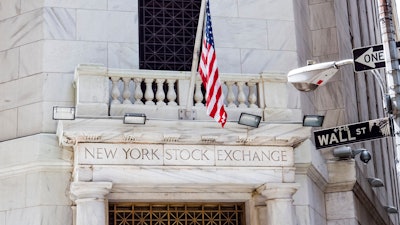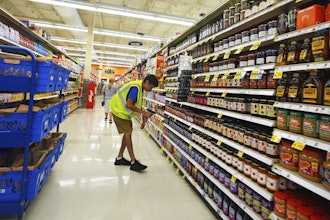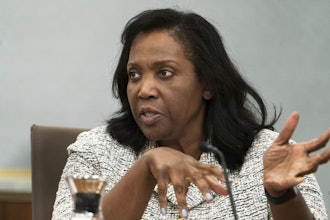
NEW YORK (AP) — Inflation gradually loosened its grip on Wall Street and the economy in 2023, raising hopes for a gentler Federal Reserve and solid gains for the market next year.
Stocks rallied to their best month of the year in November as investors raised their bets that the Fed is done hiking interest rates to fight inflation. The economy has cooled under the weight of rising interest rates, as the central bank intended, but remains surprisingly resilient.
Easing inflation and a solid economy heading into 2024 have increased the chance that the central bank could achieve a "soft landing" for the economy. That means inflation easing back to the central bank's target rate of 2% under high interest rates without the economy slipping into a recession.
"Importantly, the soft-landing scenario is very much at play here, with market participants anticipating the 'good' rate cuts to take place: those that the Fed is able to, but not forced to make," said Katie Nixon, Chief Investment Officer for Northern Trust Wealth Management.
A steep drop in gasoline prices helped slow inflation and broader energy prices have been falling throughout the year. U.S. crude oil prices are down about 10% in 2023.
Consumer electronic prices have also eased, along with some groceries. Consumers have seemingly shifted their spending, which is still strong but has slowed overall.
Inflation fell to 3% in November, according to a government report on personal spending that is the Fed's preferred measure. It peaked at 7.1% in 2022. Rates of inflation have fallen even more steeply elsewhere, slipping to 2.4% in Europe last month, the lowest in over two years. Much of that easing has been because of lower energy costs. Inflation peaked in Europe in 2022 at 10.6%.
"Slowing growth, slowing inflation is our base case scenario for 2024, creating a favorable backdrop for stocks and bonds," said Jack Ablin, chief investment officer and founding partner at Cresset.
The S&P 500 hit its highest point of the year on Dec. 1, reaching 4,594.63 points. Analysts expect that the index will finally breach 4,600, a level that the market has struggled to surpass as it advanced in 2023.
Inflation is expected to continue easing through 2024 and Wall Street is betting that the Fed will start cutting interest rates by mid-year. That could add more fuel to corporate earnings, which helps drive stock prices. Stock values are typically determined by how much profit a company generates and how much investors are willing to pay for each $1 of that. Investors typically look ahead, which means stocks have likely already factored in expectations for better earnings in 2024.
The price-to-earnings value for the broader S&P 500 has remained steady in 2023 after recovering from lower values in 2022. The technology sector is much more expensive, hovering around its highest levels in two decades.
"We anticipate global risk appetite increasing as 2024 begins, with markets experiencing some volatility as they start to discount a recovery later in the year," said investment management company Invesco in its 2024 outlook.
Retailers and other consumer-focused companies could benefit from a resilient economy with easing inflation and lower borrowing costs. Expensive technology stocks also tend to look more attractive to investors when interest rates fall.






















